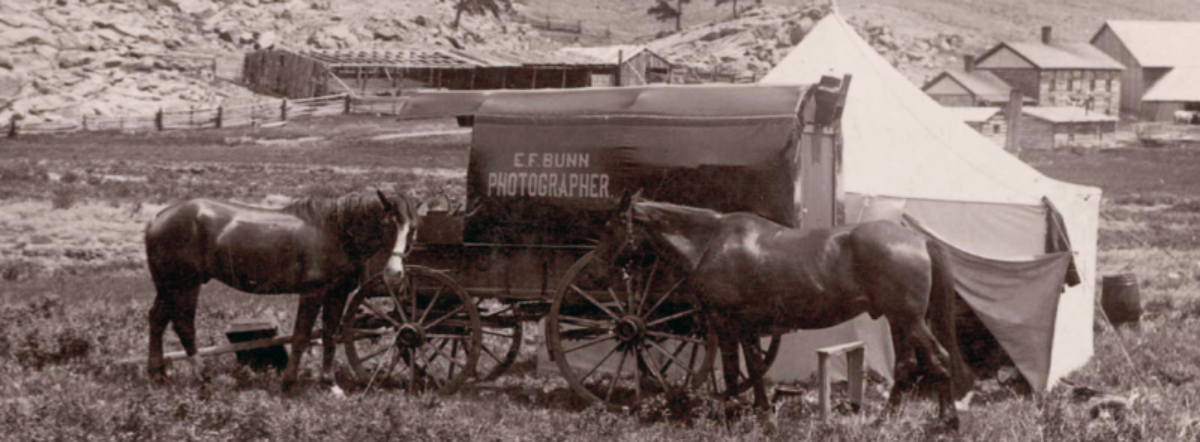Elmer E. Pascoe was born on November 3, 1861, in Indianapolis, Indiana to British immigrant, James Pascoe and Pennsylvania native Louisa Synder Pascoe. James worked as a boilermaker for the railroad. Elmer attended public schools in Indianapolis and graduated from high school.
In 1879, Elmer moved south to New Orleans, accepting a position in the wholesale dry goods business. A couple of years later, Pascoe traveled west to Colorado, working retail positions in several cities before settling in Denver at the photographic studio of George Stephan. Pascoe excelled in the field and took responsibility for Stephan’s studio during the latter’s out-of-state move. In 1891, Pascoe relocated to the silver mining community of Creede, Colorado. His photographs document the town and local events, including a group gathered for the burial of outlaw, Bob Ford.

On June 8, 1892, Creede’s Deputy Sheriff Edward O’Kelley shot and killed Bob Ford, the man responsible for killing outlaw, Jesse James. Ford had opened a dance hall, called Ford’s Exchange on May 29th, 1892. Six days later, a fire swept through Creede, and the dance hall burned to the ground. Pascoe’s photo shows a temporary tent erected on the site. The shooting, two days after the fire, was prompted by a quarrel several months earlier between O’Kelley and Ford.

By his mid-thirties, Pascoe abandoned photography, took up permanent residence in Phoenix, Arizona, and worked in real estate and the insurance business. Elmer E. Pascoe died in Los Angeles County on January 6, 1932, at the age of seventy. He was laid to rest in Forest Lawn Memorial Park, Glendale, California.
Thank you to Beverly W. Brannan for proofreading this post.
